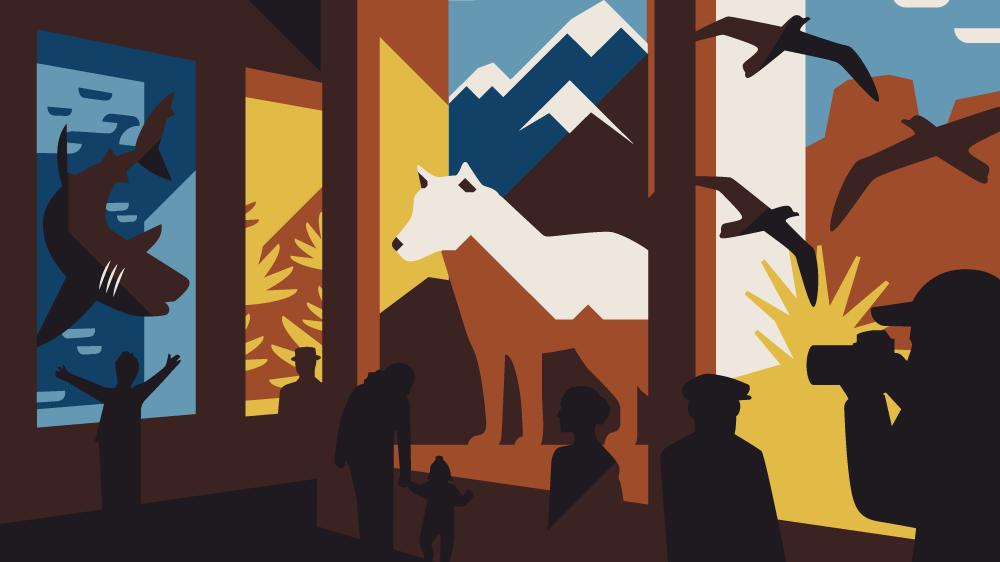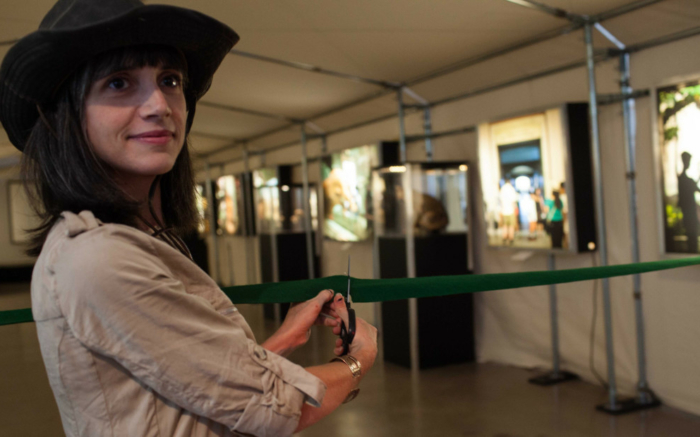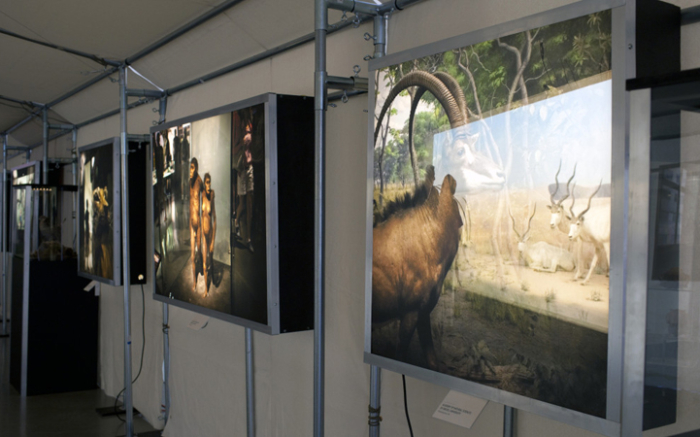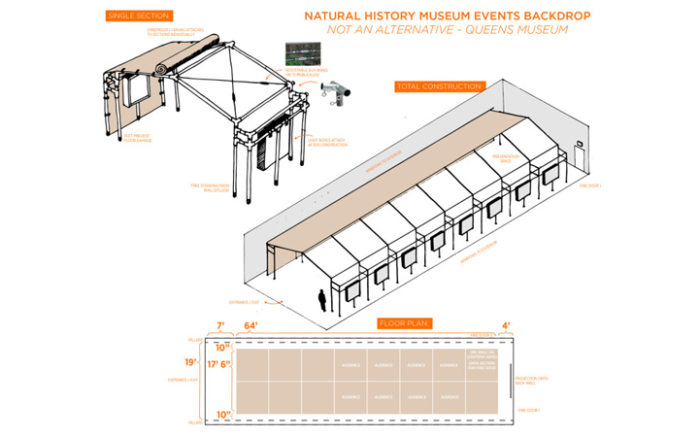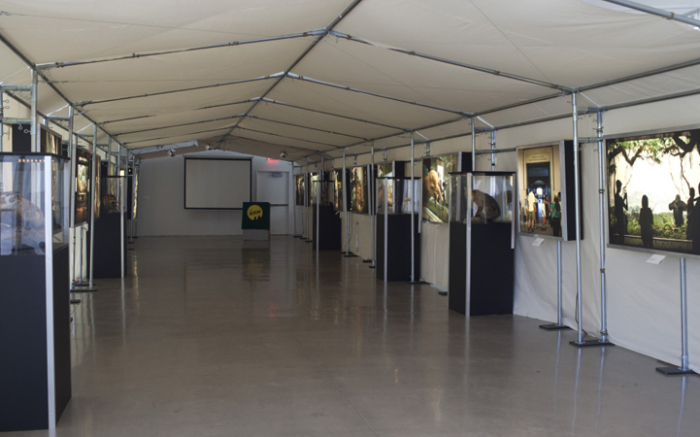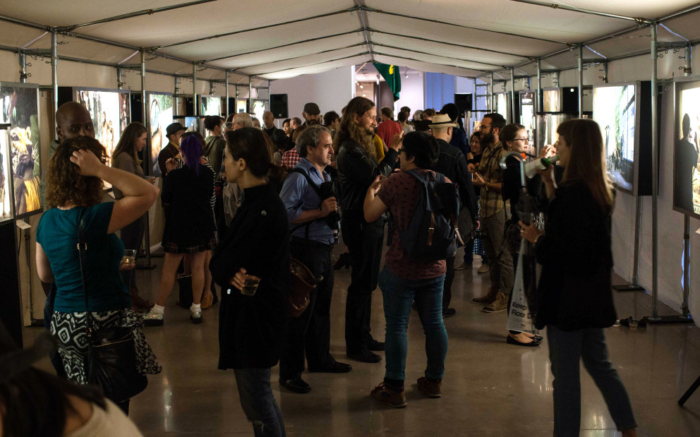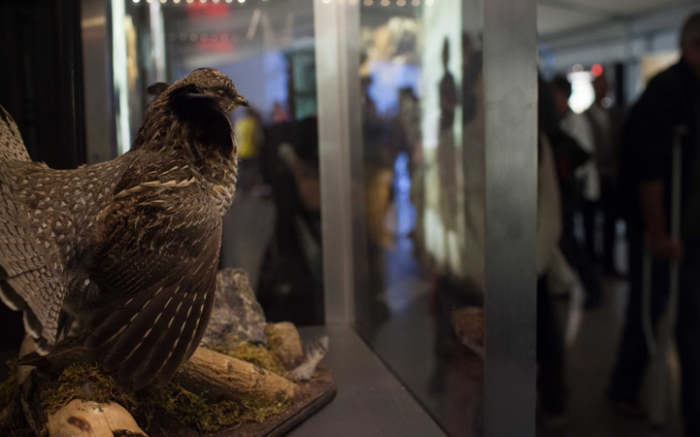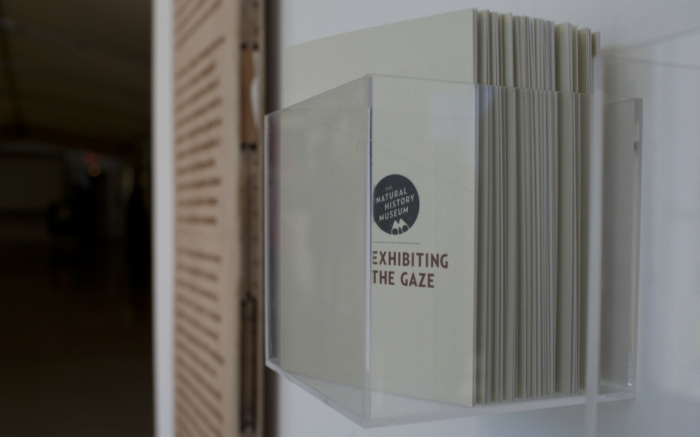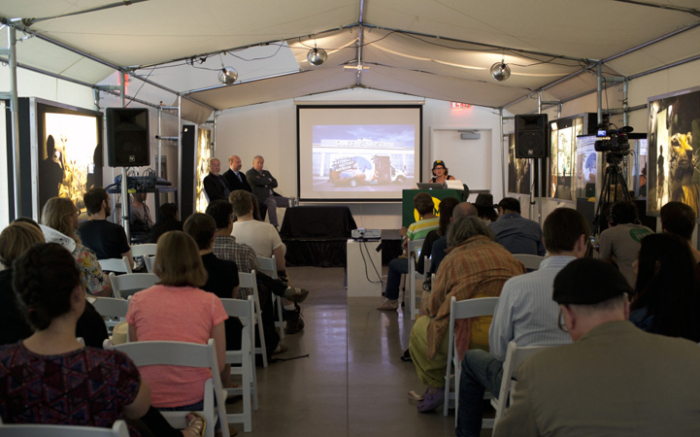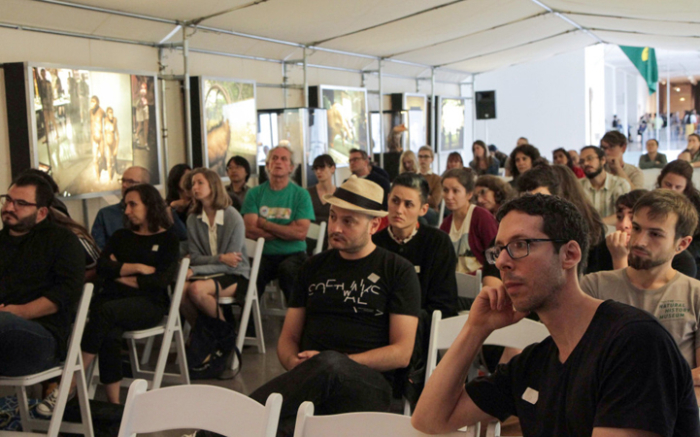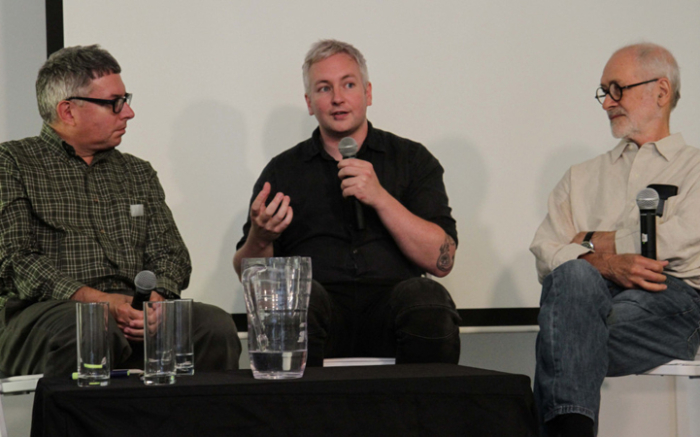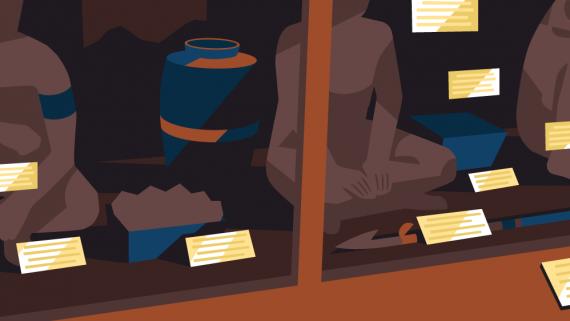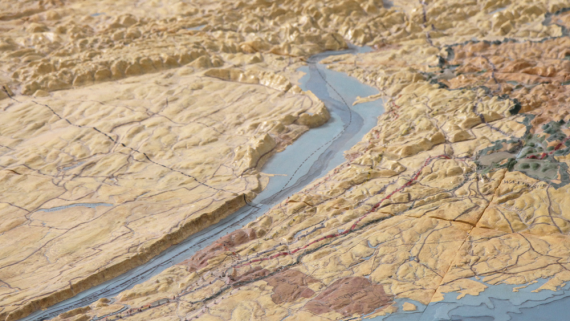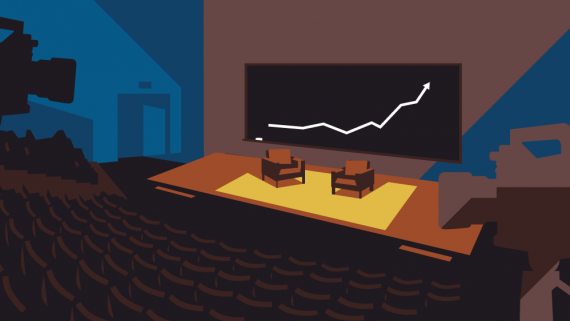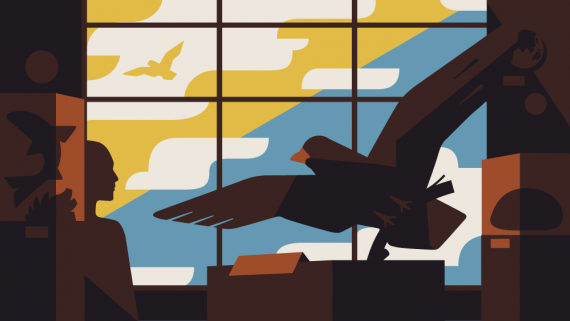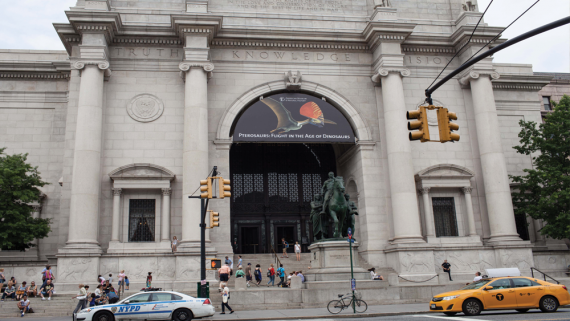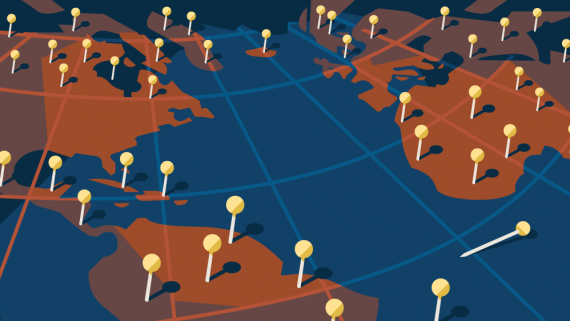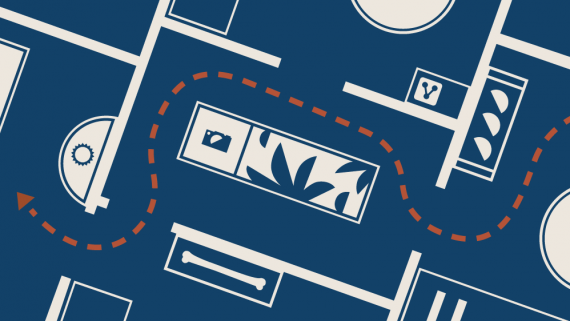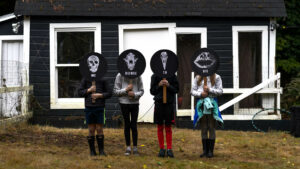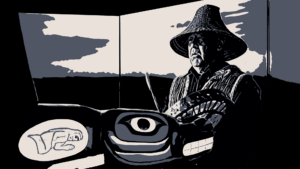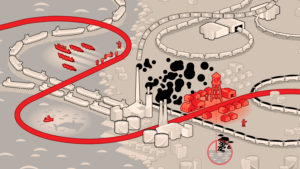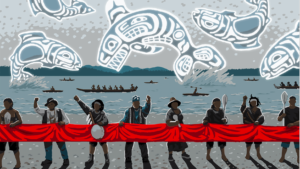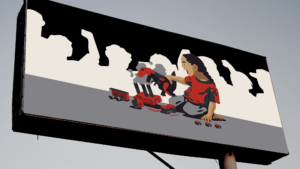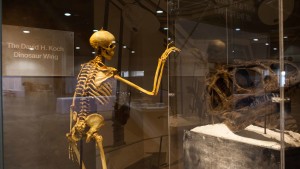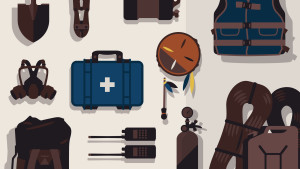The Natural History Museum had its grand opening and inaugural exhibition at the Queens Museum in September – October, 2014. It was timed to coincide with the People’s Climate March, an historic march through the streets of New York City, with more than 400,000 people calling for climate justice.
We constructed a 1000 square foot tent inspired by infrastructure used in archeology expeditions and mobile disaster response scenarios. Custom-built plinths showcased taxidermic animal specimens, and 14 light boxes featured photographs taken at 5 natural history museums across the Eastern seaboard. The photographs depicted museum visitors engaging with dioramas and nature displays—functioning as a backdrop that reflected an anthropological perspective on museums and their exhibits.
Within the photographs one could see museum goers reflected in the display cases’ glass, illuminating the ways visitors are both within the displays and exterior to them–raising questions about the role the visitors play in nature and culture. A free booklet essay entitled Exhibiting the Gaze accompanied the exhibition and explored the history of the politics of display in museum exhibitions and World’s Fairs.
The physical exhibition functioned as a backdrop for panel discussions, workshops and screenings. The programming introduced the public to the historical and theoretical framework that informs The Natural History Museum’s programs. Speakers included artists Hans Haacke, Mark Dion, and Liberate Tate, acclaimed scientists Michael Mann and Alice Bell, authors Christian Parenti and Razmig Keucheyan, historians Fred Turner and Stuart Ewen, theorist Jodi Dean, climate justice activists Gopal Dayaneni, Elizabeth Yeampierre, and Eddie Bautista, and others.
In tandem with the museum’s opening was the launch of The Natural History Museum’s online museum, and The Natural History Museum’s mobile museum, a 15-passenger tour, expedition, and action bus.
Events
The Museum Divide: Beyond Institutional Critique
Institutional critique expresses and comes up against the limits of the institution. How are activist artists borrowing the vocabulary of the museum and in so doing extending the political potential already dividing the institution from within?
read more...Words from our Sponsors: the Genealogy of Patronage in Museums
Corporate sponsorship of museums and science education can compromise the basic idea of museums as reliable sources of common knowledge. By considering historical as well as contemporary examples of museum funding, we look at the power structures embedded in practices of collecting and display.
read more...Climate Change in an Urban Panorama
By looking at the vast architectural model of New York City from the perspective of climate justice, visitors see directly the challenges and opportunities faced by urban planning for a changing climate.
read more...What the Frack are you Drinking?
Wes Gillingham, Program Director of Catskill Mountainkeeper, uses the Watershed Model to illustrate the potential impact of fracking of NYC’s water supply.
read more...Climate Wars: Propaganda, Debate, and the Propaganda of Debate
Shifting strategies–from denialism to obfuscation, advertising, and public relations–mislead the public. People become cynical and uncertain, mistrusting of any and all efforts to confront the changing climate. With science under attack, what is to be done? How might we break through the propaganda fog and into collective action?
read more...Anthropocene, Capitalocene or Ecology For All
This panel considers the violent legacies of capitalism’s exploitation and appropriation of nature. It inquires into how views of natural systems as separate from human systems–political, social, and economic–may be part of the problem we face in confronting climate change.
read more...Anthropological Workshop with the Hemispheric Institute
The Natural History Museum presents a day-long anthropological workshop for students from the Hemispheric Institute at New York University. Topics covered include institutional critique, interventionism, and the politics of display. Includes a guided tour of and exercises within the American Museum of Natural History.
read more...Counter-Power for Climate Justice
To build a global climate movement, we have to address the asymmetries in the burden of responsibility and the burden of impact. This requires that we acknowledge the ways inequalities are deeply embedded in the systems that continue to produce and deny climate change, hindering our abilities to mobilize against it.
read more...Seeing the Display: Environmentalism’s Ideological Habitat
This panel looks at the ways the structure of exhibitions, design and communication influences how we see what is natural in the autopoietic habitats of the contemporary.
read more...
